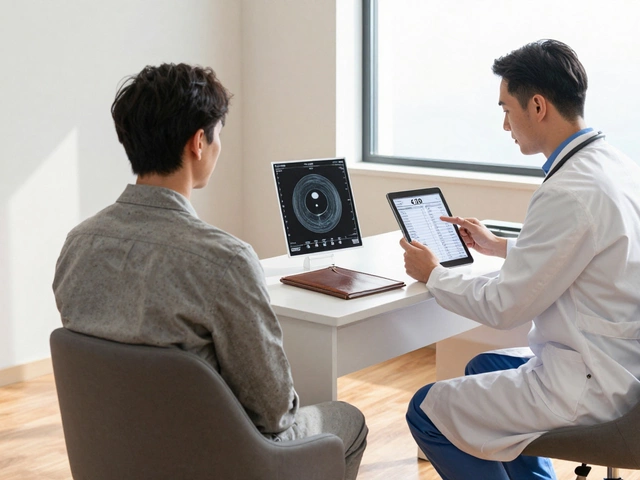Sick of surprise pharmacy bills? SingleCare has become a lifesaver for folks who want to slash their prescription costs—no insurance games involved. But do you need to check a bunch of boxes or fill out endless forms to use it? Not even close.
With SingleCare, there’s no complicated qualifying process or fine print. It’s way more laid-back than most things tied to health or medicine. You don’t need to be uninsured, show proof of income, get a doctor’s note, or join a club. Anyone, with any insurance status, age, or health condition, can use it—yes, even if you have insurance or Medicare. It works more like a coupon than an insurance card, giving discounts upfront at the pharmacy counter.
If you’ve got a smartphone or internet connection, getting started is mostly just looking up your prescription online and showing the SingleCare discount card at pickup. You don’t have to sign up or pay a membership fee to use their deals—just show the card or the app. Insurance won’t block you, and pharmacists are used to seeing these cards, so it won’t slow you down.
- What Is SingleCare and How Does It Work?
- Who Can Use SingleCare—Do You Qualify?
- How to Find and Use SingleCare Discounts
- Tips and Common Questions
What Is SingleCare and How Does It Work?
SingleCare is basically a free prescription savings service. Think of it as a giant digital coupon for your medications. Instead of searching for deals yourself or paying high out-of-pocket costs, SingleCare does the hunting. Their deals are accepted at over 35,000 pharmacies across the U.S. including big names like CVS, Walgreens, Walmart, Rite Aid, and Kroger.
So, how does it work? SingleCare negotiates bulk discounts on meds—just like how big insurance companies do, but you don’t need insurance to get these savings. All you do is search your prescription on their app or website, find the pharmacy price you like, and show the discount card or coupon to the pharmacist when you pick up your meds. The pharmacy runs it, and you pay the discounted price on the spot. You can use it as often as you want, for nearly any FDA-approved medication.
Here’s a quick view of SingleCare in action:
- No sign-up or membership required
- Free for everyone—no eligibility hoops
- Instant savings, even if you have insurance
- Coupons work for brand and generic meds
- Accepted at most U.S. pharmacies
To put it in perspective, here’s an example of potential SingleCare savings for common medications (even for people with insurance):
| Prescription | Average Retail Price | SingleCare Price (approx.) | Possible Savings |
|---|---|---|---|
| Atorvastatin (cholesterol) | $31 | $12 | $19 |
| Sertraline (antidepressant) | $27 | $11 | $16 |
| Lisinopril (blood pressure) | $25 | $8 | $17 |
| Metformin (diabetes) | $19 | $4 | $15 |
SingleCare’s big draw is its simplicity—you don’t need to file claims, talk to your insurer, or wait days for approvals. If you’re looking to pay less for your meds right at the pharmacy, SingleCare is about as low-hassle as it gets.
Who Can Use SingleCare—Do You Qualify?
This is where SingleCare stands out: you probably already qualify without even realizing it. The best part? There’s no approval process, no paperwork, and absolutely no sign-up fees. The whole thing works like a free SingleCare prescription coupon, and just about anyone in the U.S. can use it at major pharmacies.
Here’s exactly what you need (and don’t need) to qualify:
- No insurance required. You can use SingleCare on its own or even compare it next to your regular insurance copay. A lot of people discover the SingleCare price is actually cheaper than their insurance rate.
- No age limits. Whether you’re 22 or 82, it doesn’t matter. Anyone can use the card for themselves, kids, or even a pet (just ask the vet for a written prescription you can bring to the pharmacy).
- One card, multiple users. If you pick up meds for your spouse or children, you’re still good—just give the pharmacist the card like you would for yourself.
- Legal residency. You do need to be in the U.S. and get your prescriptions from a participating pharmacy, but you don’t have to be a citizen. There’s no ID or background check.
SingleCare works at more than 35,000 pharmacies, including CVS, Walgreens, Walmart, Rite Aid, Kroger, Albertsons, and more. Here’s a quick look at who typically uses it—and who can:
| Person | Can they use SingleCare? |
|---|---|
| Uninsured adults | Yes |
| Parents getting meds for kids | Yes |
| Medicare/Medicaid users | Yes (but can’t combine with public insurance – pick whichever is cheaper) |
| People with pet prescriptions | Yes |
| People with private insurance | Yes (compare prices before paying) |
One thing to remember: you can’t combine SingleCare with your insurance for the same prescription—it's one or the other, whichever gives you a better deal. But no, you don’t have to be low income, uninsured, or over a certain age. You just need a prescription and a participating pharmacy. That’s it.

How to Find and Use SingleCare Discounts
Finding the right prescription discount with SingleCare is super easy—and you don’t need to be a tech pro. First things first: head over to the SingleCare website or download their free app. All you need is the name of your medication. Just type it in, and you’ll see instant results showing prices at local pharmacies. It’s wild how much prices can differ for the same pill just a few blocks away.
- Enter your prescription name—spelling matters.
- Add your dosage and number of pills.
- Plug in your zip code to see prices at pharmacies near you.
Pharmacies you’ll spot include CVS, Walgreens, Walmart, Rite Aid, and thousands of independents. The price you see on SingleCare is what you’ll pay—no surprises. Grab the digital discount card that pops up with the price, or print it if you’re old-school.
- Show your SingleCare card or phone screen to the pharmacist when you drop off or pick up your prescription. No sign-up needed—just show and save.
- The pharmacist will use the SingleCare info instead of your insurance (if that gets you a better deal).
- You pay the discounted price right there, no waiting for reimbursements later.
SingleCare even lets you stack up points each time you use their card, which can earn you $2 just for refilling with them several times. They track this automatically with your phone number—no app gymnastics needed.
Here’s a quick peek at how much you can save, using genuine SingleCare data from 2024:
| Medication | Average Retail Price | SingleCare Price | Typical Savings (%) |
|---|---|---|---|
| Atorvastatin (cholesterol) | $28.00 | $8.68 | 69% |
| Lisinopril (blood pressure) | $19.00 | $6.36 | 67% |
| Fluoxetine (depression) | $24.00 | $4.00 | 83% |
The most important part? Compare options. Even if you have insurance, check SingleCare anyway. Pharmacies let you use whichever price is lower—insurance or SingleCare. This is how people end up saving hundreds a year, just by taking two minutes online before heading to the pharmacy.
Tips and Common Questions
Got questions about saving the most at the pharmacy or how SingleCare works? You're definitely not alone. Here’s the lowdown on tips, tricks, and those classic "wait, can I really do this?" questions about SingleCare.
- Compare prices before you go: Don’t just pick up your meds like always. Go to the SingleCare website or use their app, search your prescription, and compare local pharmacies. Prices can be shockingly different—sometimes by $20 or more for the same drug, just one block apart.
- No ID checks or weird interviews: Pharmacies don’t ask a bunch of questions. Just show the SingleCare card (digital or printed) along with your prescription. They’ll process the discount automatically.
- Can I use it with insurance? You can’t combine SingleCare with insurance for the same prescription, but you can ask both prices at the counter. Pick whichever is cheaper—pharmacies are totally used to doing the comparison.
- Refills and family members: You can use SingleCare for every refill and for anyone in your family, even your kids or parents. Just show the card. No paperwork, no approvals.
- Saving on generics vs. brand names: The biggest savings are usually on generics, but it still helps with some brand medications. It’s worth searching both just in case.
| Medication | Retail Price | SingleCare Price | Potential Savings |
|---|---|---|---|
| Lisinopril (30 tablets) | $19.00 | $7.50 | $11.50 |
| Atorvastatin (30 tablets) | $29.00 | $9.00 | $20.00 |
| Albuterol Inhaler | $64.00 | $29.00 | $35.00 |
| Lexapro (30 tablets) | $133.00 | $25.00 | $108.00 |
Still scratching your head? Here are answers to stuff people ask all the time:
- Do I have to sign up to use SingleCare? No sign up required for most features. You can just search and show the card. But if you create an account, you can track your savings and get refill reminders.
- What if the pharmacist isn't sure how to use it? Politely point to the BIN, PCN, and Group numbers on the card—those are like the card’s ID, and they’ll know what to do after that.
- Can you really use it on pet meds? Yes, as long as the animal is getting a human medication at a regular pharmacy. Ask the vet for a written prescription to bring in.
- Is there a catch—like hidden fees? No hidden fees or “gotchas.” The price you see online or in the app is what you pay at the counter. That’s it.
The bottom line: don’t just accept whatever price the pharmacy or your insurance gives you. Always compare. Even folks with solid insurance save big with SingleCare, especially if they have high deductibles or meds not fully covered. It’s quick, costs nothing, and could save you hundreds a year.




